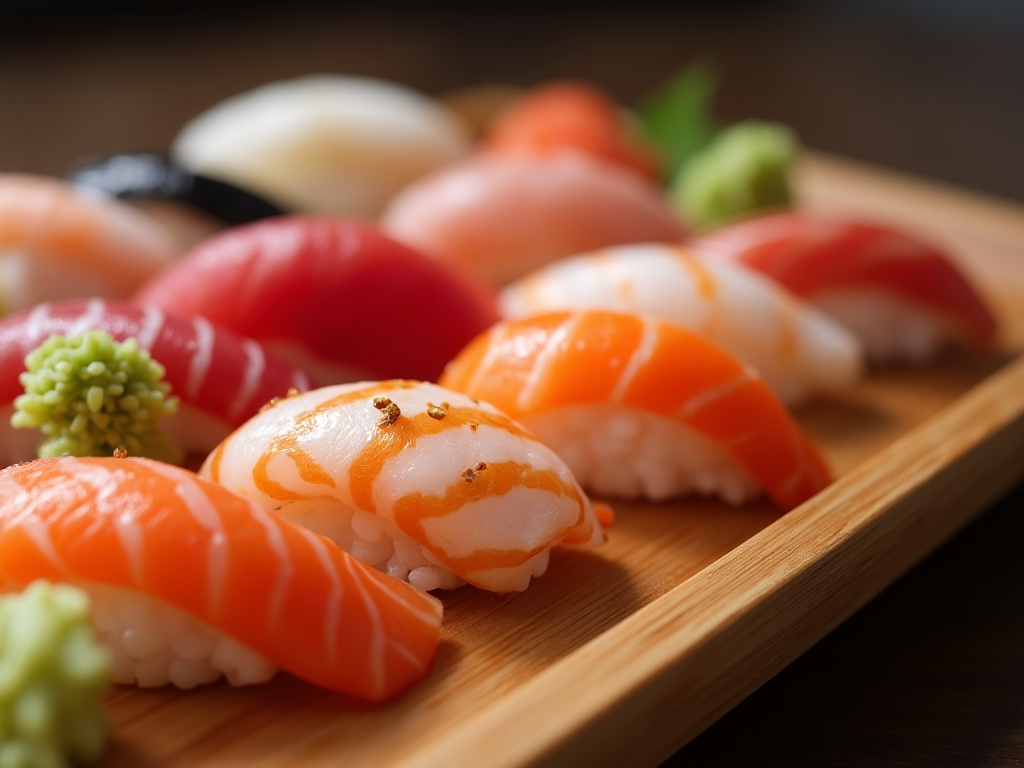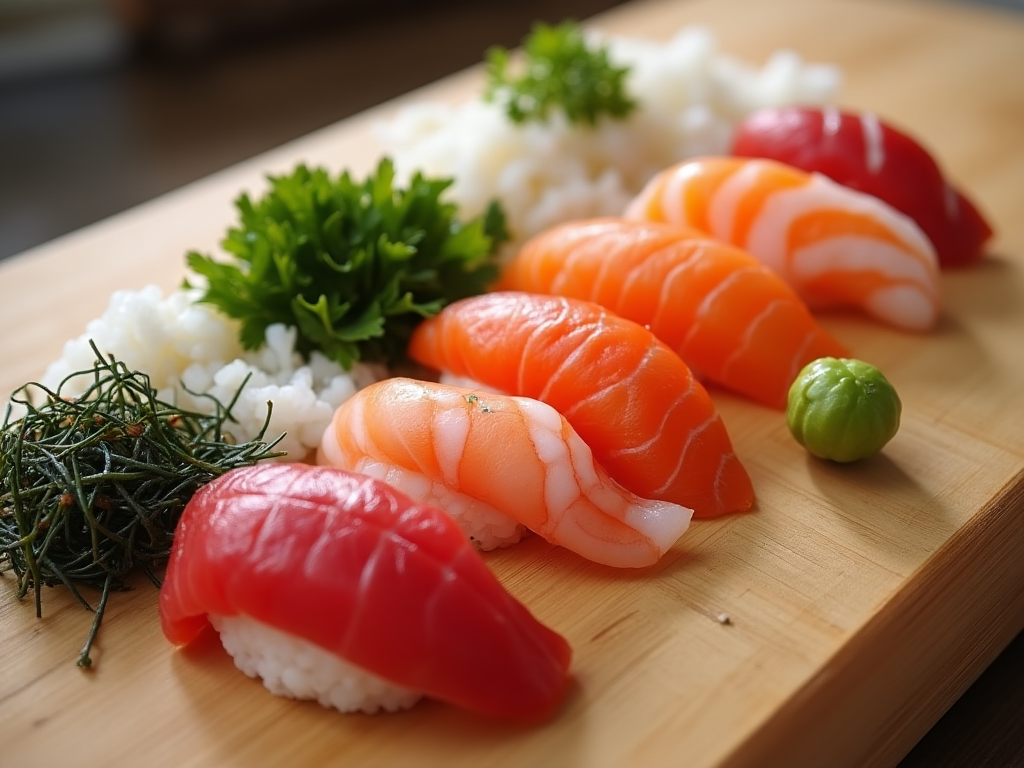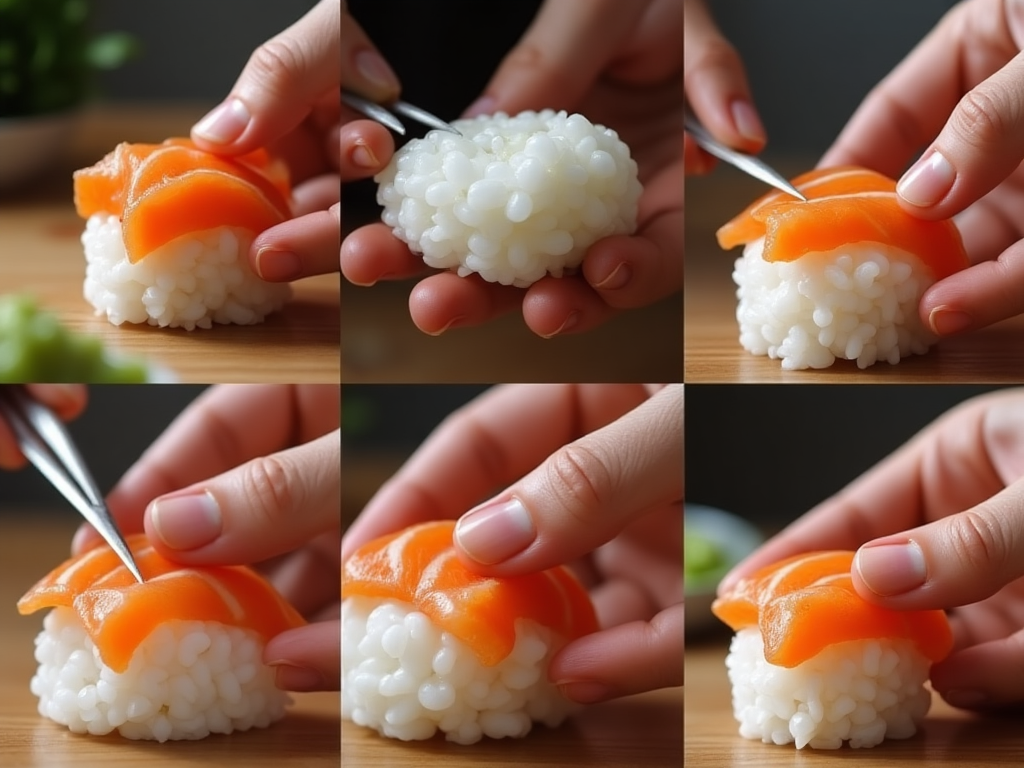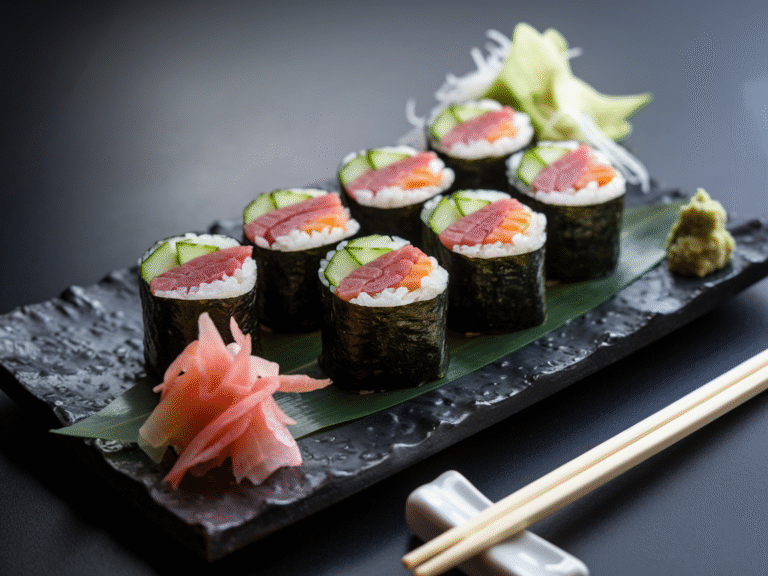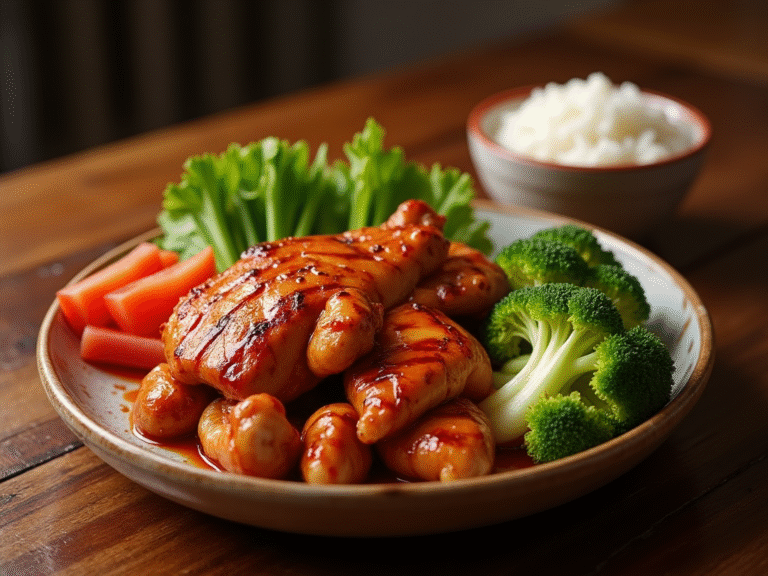Nigiri Sushi Recipe | A Simple, Authentic Guide to Making Delicious Sushi at Home
Nigiri Sushi Recipe: A Step-by-Step Guide to Making Authentic Sushi at Home
1. Introduction
There’s something incredibly comforting about sitting down to a plate of freshly made sushi, and one of the simplest yet most delicious options is nigiri sushi. Whether you’re a sushi newbie or a seasoned enthusiast, this classic dish of vinegared rice topped with a slice of fresh fish is a meal that never disappoints. It’s light, flavorful, and incredibly customizable.
In this recipe, I’ll take you through each step of making nigiri sushi from scratch, so you can enjoy the fresh, delicate flavors right at home. From picking the right ingredients to perfecting your sushi-making technique, you’ll learn everything you need to create restaurant-quality sushi that will impress your family and friends. Let’s dive in!
Why You’ll Love This Recipe
Nigiri sushi is incredibly easy to make once you get the hang of it, and it’s completely customizable based on your taste preferences. Whether you enjoy classic fish like salmon and tuna or prefer more adventurous toppings, you’ll love how versatile this dish is. Plus, it’s a fun way to practice your sushi-making skills!
2. Ingredients Breakdown
To make the perfect nigiri sushi, you’ll need the following ingredients. Each one plays a key role in the flavor and texture of the dish, so it’s important to use fresh, high-quality options.
- Sushi Rice: Sushi rice is the base of nigiri. It’s a short-grain rice that becomes sticky when cooked, making it perfect for shaping. You’ll need sushi vinegar to season the rice, adding a tangy flavor to balance the richness of the fish.
- Fresh Fish (Salmon, Tuna, Shrimp, etc.): The fish is the star of the show. For salmon and tuna, look for sushi-grade fish to ensure it’s safe to eat raw. Shrimp should be boiled or blanched before serving.
- Nori (Seaweed): A thin sheet of nori adds a hint of saltiness and helps to bind the rice and fish together.
- Wasabi: This spicy paste is a traditional accompaniment to sushi, adding heat and sharpness that pairs well with the rich fish.
- Pickled Ginger: Used as a palate cleanser between bites, ginger adds a refreshing kick.
Common Substitutions and Dietary Preferences:
- Vegetarian Option: If you prefer a plant-based option, you can substitute fish with fresh vegetables like avocado or cucumber.
- Gluten-Free Option: Sushi rice is typically gluten-free, but double-check your soy sauce or use tamari for a gluten-free alternative.
3. Step-by-Step Instructions
Making nigiri sushi at home is simple with the right technique. Follow these steps, and you’ll be enjoying your sushi in no time!
- Cook the Sushi Rice
Rinse the sushi rice thoroughly until the water runs clear. Cook the rice according to the package instructions. Once cooked, allow it to cool slightly before seasoning with sushi vinegar. Mix gently to combine. - Prepare the Fish
Slice your fish into thin, bite-sized pieces. For salmon and tuna, aim for slices about 1/4 inch thick. If using shrimp, peel and boil them briefly before slicing them in half lengthwise. - Shape the Rice
Wet your hands with a bit of water to prevent sticking. Take a small amount of sushi rice (about the size of a walnut) and mold it into a small oval shape using your fingers. - Assemble the Nigiri
Place a slice of fish on top of the shaped rice. For a clean finish, gently press the fish onto the rice to ensure it sticks. - Garnish with Wasabi
Add a small dab of wasabi between the rice and the fish for an authentic, spicy kick. Be sure not to add too much, as wasabi can be quite potent. - Serve
Arrange the nigiri on a platter and serve immediately. You can also offer pickled ginger on the side to cleanse the palate between bites.
4. Tips and Variations
Here are a few tips to elevate your sushi game:
- Use Wet Hands: This will keep the rice from sticking to your fingers while shaping.
- Fish Quality Matters: Always use sushi-grade fish to ensure the best flavor and safety.
- Fresh is Best: Nigiri sushi tastes best when served immediately, as the rice can dry out and the fish can lose its delicate texture.
Variations:
- For Extra Flavor: Top your nigiri with a drizzle of soy sauce or a sprinkle of sesame seeds.
- Vegetarian Version: Try using avocado, cucumber, or even a slice of mango for a tropical twist.
- Spicy Tuna: Mix raw tuna with spicy mayo to create a spicy tuna nigiri variation.
5. Serving Suggestions
Nigiri sushi can be served with a variety of sides to complete the meal.
- Sides: A light miso soup, seaweed salad, or edamame pairs wonderfully with nigiri sushi.
- Garnishes: Garnish with additional wasabi, pickled ginger, and perhaps a few slices of lemon or lime to brighten up the dish.
- Pairing Ideas: For drinks, consider pairing your sushi with a cold glass of sake or green tea. If you’re in the mood for something stronger, a crisp white wine, like Sauvignon Blanc, is a great choice.
6. Storage and Reheating Instructions
Sushi is best enjoyed fresh, but if you have leftovers, here’s how to store them:
- In the Fridge: Wrap the sushi tightly in plastic wrap and store in an airtight container for up to 1-2 hours. The rice may harden, but you can microwave it for a few seconds to soften it.
- Freezing: It’s not recommended to freeze nigiri sushi, as it will compromise the texture of both the rice and the fish.
To reheat sushi rice:
- Microwave: Place the sushi rice in a damp cloth and microwave for 20-30 seconds to soften it.
- Oven: Warm the rice in a preheated oven at 250°F for 5-10 minutes.
7. Recipe Notes
- Can be prepped ahead of time: You can cook the sushi rice in advance and store it in the fridge for up to a day before making your nigiri.
- Best with Fresh Fish: Sushi is best when made with freshly sourced fish, so be sure to use sushi-grade ingredients.
- Use a Bamboo Mat: For a more traditional approach, a bamboo sushi mat can be helpful for shaping and rolling your sushi.
8. Nutrition Information (Per Serving)
| Nutrient | Amount per Serving |
|---|---|
| Calories | 250 |
| Fat | 5g |
| Saturated Fat | 1g |
| Carbs | 33g |
| Sugar | 0g |
| Fiber | 1g |
| Protein | 12g |
| Sodium | 450mg |
| Cholesterol | 25mg |
| Calcium | 40mg |
| Iron | 1.5mg |
Nutrition information is an estimate and may vary based on specific ingredients used.
9. Recipe Card Summary
- Course: Main
- Cuisine: Japanese
- Servings: 2-4
- Prep Time: 30 minutes
- Cook Time: 10 minutes
- Total Time: 40 minutes
Ingredients:
- Sushi rice
- Fresh fish (salmon, tuna, shrimp)
- Nori (seaweed)
- Wasabi
- Pickled ginger
Instructions:
- Cook the sushi rice and season it with sushi vinegar.
- Slice the fish into thin pieces.
- Shape the rice into small ovals.
- Top the rice with the fish.
- Add a dab of wasabi between the rice and fish.
- Serve immediately with pickled ginger.
Notes: Serve with miso soup or seaweed salad for a complete meal.
10. Health Benefits
- Salmon: Rich in omega-3 fatty acids, which are good for heart health.
- Tuna: High in protein and low in fat, making it an excellent choice for lean muscle building.
- Rice: A great source of energy and provides essential carbs.
11. Suggested Sauce
A drizzle of soy sauce or spicy mayo pairs perfectly with nigiri sushi, adding flavor and depth to each bite.
12. Avoid These Mistakes
- Don’t overcook your sushi rice; it should be sticky but not mushy.
- Avoid using fish that isn’t sushi-grade, as it may not be safe to eat raw.
- Don’t skip the sushi vinegar; it’s essential for seasoning the rice.
- Ensure your hands are damp when shaping the rice to avoid sticking.
13. FAQs
- What is sushi-grade fish?
Sushi-grade fish is fish that is deemed safe to eat raw due to the way it’s handled and stored. It’s best to buy from a trusted source. - Can I use frozen fish for sushi?
Yes, if the fish has been frozen to a temperature of -4°F for at least 7 days to kill parasites. - How do I make the rice stick to the fish?
Gently press the fish onto the rice to ensure it sticks. - Can I make nigiri without fish?
Yes, you can use avocado, cucumber, or even a variety of vegetables for a vegetarian version. - How long does nigiri last?
Nigiri is best eaten fresh, but it can be stored for up to 2 hours in the fridge. - Is nigiri sushi gluten-free?
Sushi rice and fish are gluten-free, but be cautious with soy sauce. Opt for tamari for a gluten-free version.
14. Final Thoughts
Making nigiri sushi at home is a rewarding experience that allows you to enjoy restaurant-quality sushi anytime you want. Whether you’re a beginner or a sushi connoisseur, this recipe provides all the steps you need to master the art of nigiri. Let me know how your sushi turns out in the comments below!

